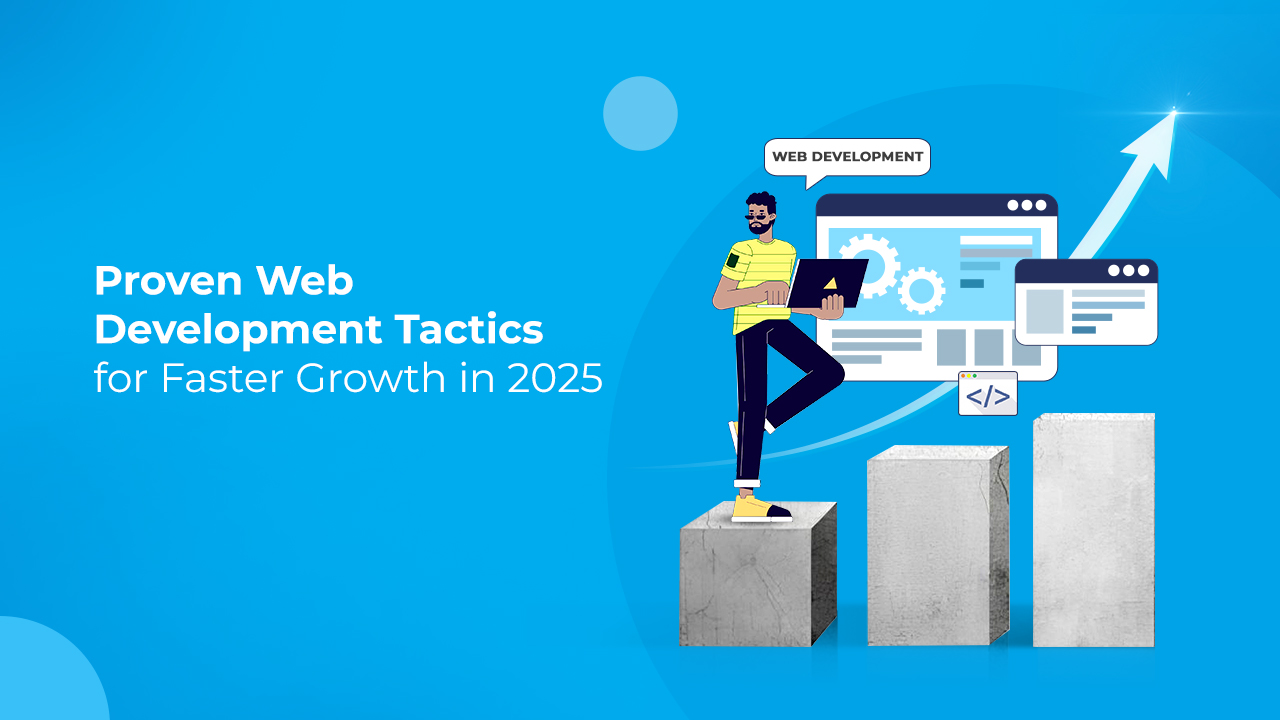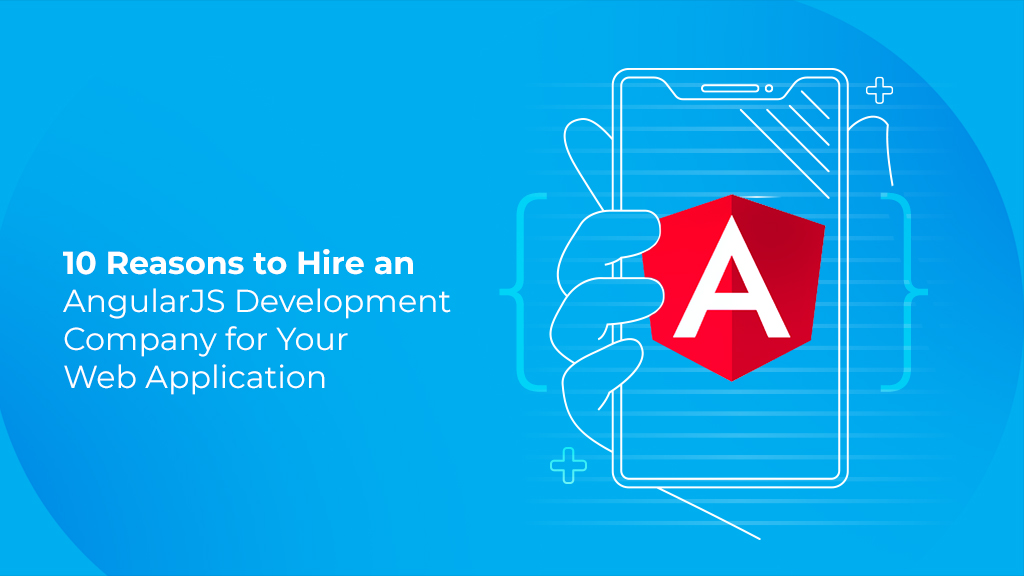
Proven Web Development Tactics for Faster Growth in 2025
Websites have been around since 1991. That’s a long time. And even with social media and mobile apps, businesses still rely on websites to get attention, build trust, and make money. Web developers today are constantly refining web development tactics to meet those needs.
But here’s something a lot of business owners don’t realize. Your website might look fine when you open it. It might show your content, your photos, your menu, everything. But that doesn’t mean it’s performing properly. It could still be slow. Or difficult to use. Or not showing up on search engines. You wouldn’t know just by glancing at it. That’s why investing in professional web development services can make all the difference in long-term performance.
Have you ever tried opening your site on your phone with slow mobile internet? Or checked how long it takes before anything useful appears? Most people never do. But your visitors do it every day. This is why website speed optimization plays a huge role in conversion rates.
Now ask yourself: when someone opens your website, does it load quickly? Can they click without delay? Can they find what they need without getting frustrated?
If not, they leave. They don’t call, they don’t buy, and they don’t come back. Businesses working with a growth-focused web development company are better positioned to prevent this drop-off.
There’s no message saying “You lost a sale because your page took 6 seconds to load.” That is why performance is everything. Web development tactics should be focused on real-world outcomes, not just visual appeal.
The problem is that without speed and clarity, even a good-looking website can fail.
What Does Modern Web Development Entail?
A lot of people think web development means designing how a site looks. Colours, buttons, banners, stuff like that. That’s part of it, yes. But it’s only the surface.
Staying updated with modern web development trends ensures your site functions beyond just appearance.
The real work happens in how the website behaves. A web developer is the one who makes sure the site loads fast, works properly on mobile phones, responds when someone clicks, and doesn’t crash when 100 people open it at the same time.
They also write the code that powers everything behind the scenes. This includes how pages are structured, how the browser reads the content, how information gets sent to the server and back. Without this, nothing works. Or worse, it works… slowly.
That’s why good developers always follow effective web development tactics to streamline performance.
Have you ever opened a site and the layout kept shifting around while it loaded? That’s what happens when development is done poorly. The job of a developer is to prevent things like that.
They also look at what’s slowing the site down. Maybe it’s big images. Maybe it’s a bunch of third-party tools. Maybe it’s a bad hosting plan. Whatever it is, they fix it.
You may not realise this, but developers today also need to make sure your site follows certain performance rules—because search engines care about speed and user experience too.
For a deeper understanding of how to enhance these metrics effectively, check out our detailed guide on Core Web Vitals optimization tactics that can significantly boost your site’s SEO and overall user experience.
Measuring Speed and Performance: Core Web Vitals
You might have heard the phrase “Core Web Vitals” thrown around. It sounds technical, but it’s really just a way to measure how well your website performs.
Google came up with it to check if your site gives people a good experience. These metrics are now an essential part of modern web development tactics. There are three main things Core Web Vitals look at.
-
Largest Contentful Paint
First is loading speed, which Google calls Largest Contentful Paint (LCP). This checks how long it takes before the main part of your page shows up. Not the whole thing, just the part someone can actually start reading or clicking.
-
First Input Delay
Second is interactivity, or First Input Delay (FID). That means how fast your site reacts when someone taps or clicks. Have you ever clicked a button, and nothing happened for a second or two? That’s what this part checks. A slow reaction feels broken, even if it’s not.
-
Cumulative Layout Shift
And third is visual stability, called Cumulative Layout Shift (CLS). It sounds boring, but it matters. This checks whether things on the page move around while loading. You’ve probably tried to click something and it shifted at the last second. Annoying, right?
These three scores affect whether Google shows your site to people. But even more than that, they affect whether real people stay or leave.
If your site fails on these points, you are losing visitors. It’s as simple as that.
Hiring a growth-focused web development company can help you improve these metrics quickly.
Major Ways to Take Your Website to the Height of Optimization
1. Clean Up What You Don’t Need
Websites often carry things they no longer use—old plugins, leftover scripts, outdated code, unused fonts. All of this slows the site down. It’s like running a shop where half the shelves are cluttered with junk no one buys. Removing those extras reduces how much the browser needs to load. This cleanup forms the foundation of many smart web development tactics.
Let’s say you used a booking tool two years ago and removed the feature from the site. But the script still loads in the background. Why? Because no one deleted the code. That happens more than you think.
The fewer things your website loads, the faster it responds. Isn’t that what you want?
2. Compress Images Without Making Them Defective
Images can take up a lot of space. If your page is loading slowly, there’s a good chance the pictures are too large. You don’t need to upload a 5MB image just to show a product or a banner. There are ways to shrink image size without making it look pixelated or blurry.
There’s something called WebP format—it makes image files smaller but still clear. If you’ve never heard of it, that’s okay. The point is: images should be light, not heavy. Even one image that’s too big can slow down your whole page. That’s how sensitive it is. Image compression is one of the simplest but most effective web development tactics for performance.
3. Use a Fast, Reliable Hosting Provider
This part might sound boring, but it’s important. Your website files live on a server. If that server is slow or overcrowded, your website will be too. Even if your site is perfectly built, a bad host will ruin it.
Shared hosting might be cheap, but it puts you on the same server as hundreds of others. That’s like being in a traffic jam every day. You can’t move freely. It’s slow, and it feels broken.
It might cost more to switch to a better host, but it’s worth it. You get faster speeds, better uptime, and less frustration. Isn’t that the point? For scalable web development solutions, secure hosting is step one.
4. Minimise HTTP Requests
Every time a page loads, it has to ask for stuff—images, scripts, stylesheets, fonts. Each of these is a separate request to the server. The more requests, the longer it takes to load everything. Too many, and your site feels like it’s badly lagging.
You may not realize this, but some websites make over 100 requests per page. That’s a lot. A web developer can look at how many requests your site makes and cut it down. By combining files or removing extras, things get leaner.
Want your website to move faster? Make it ask for fewer things. It’s really that simple. This is where an agency providing end-to-end web development solutions can help.
5. Enable Browser Caching
Caching means saving parts of your website in the visitor’s browser so it doesn’t have to load everything again next time. This is especially useful for repeat visitors. If someone’s already been to your site, their browser can remember parts of it—like your logo or stylesheet—and load the page faster.
Let’s say someone checks your site today, then returns tomorrow. With caching turned on, your site loads in half the time. Without it? The browser fetches everything from scratch again. That wastes time and data.
A developer can set up caching rules so your site knows what to save, and for how long. Caching is another vital part of growth-driven web development strategies.
6. Use Lazy Loading for Images and Videos
Lazy loading means only loading images or videos when someone scrolls down to them. So, instead of loading everything at once, the page shows just what’s needed at that moment.
Think about a long homepage filled with photos. If a visitor only reads the top part and leaves, the rest of the images never need to load. So why load them at all?
This trick cuts down on loading time at the start. The visitor sees something quickly, which keeps them around.
Isn’t that better than making them wait for every picture, even ones they never scroll to?
7. Keep Your Code Simple and Efficient
Some websites have messy code. Extra tags, duplicated styles, functions that aren’t even being used anymore. It happens when a site has gone through years of edits without a proper cleanup.
A developer can review and simplify the code. That means shorter loading times and fewer chances for bugs to creep in. Imagine if your house had five light switches for one bulb. It works, sure, but it doesn’t make sense. And over time, it causes problems.
Clean code is easier to maintain, too. So when you need changes later, it doesn’t break the whole thing. So, you see, hiring professional web development services makes long-term sense.
8. Optimize for Mobile First
Most people visit websites from their phones now. So, if your site doesn’t work well on mobile, you’re losing out, no matter how nice it looks on a desktop.
A mobile-optimized site loads faster because it avoids unnecessary desktop-only features. It uses smaller images, simpler layouts, and bigger touchable areas so users can scroll and tap without mistakes.
Have you ever opened a site on your phone and the text was tiny, or the menu was too small to tap? That’s a design made only for computers.
Mobile-first fixes that. It puts the phone experience first, which is where your visitors usually are. It also means applying responsive design principles to keep everything fluid and accessible.

How Do Progressive Web Apps (PWA) Help?
-
They Load Faster, Even on Weak Connections
PWAs are built to work well even when the internet is patchy or slow. They load quickly by saving some of the important parts of the website in your browser after the first visit.
So the next time someone opens your site, they’re not waiting all over again. It just shows up.
This matters a lot if your customers are in places with weak signal or slower data. Ever tried opening a website on 3G in the middle of nowhere? It’s frustrating. PWAs help avoid that.
-
They Work Like Apps, Without Being One
You can add a PWA to your phone’s home screen. It opens in full screen, without the browser bar. It feels like an app, but it’s not something you need to download from an app store.
Say someone uses your site often. Maybe it’s a service dashboard or maybe it’s an ecommerce store. With a PWA, they can tap and open it like they would WhatsApp. That small change makes it easier for them to come back again and again.
-
They Still Work Offline
It might sound strange, but PWAs can still show parts of your website even if there’s no internet at all.
Visitors may browse your product list when they have a stable signal. Later, even if they’re offline, they can still go back and see those pages.
Now, think about it. How many websites stop working completely when your data goes out for a few seconds? PWAs don’t.
-
They Improve User Experience Without Costing Too Much
You don’t need to build a full app for iOS and Android to give users a fast, smooth experience. A PWA gives you many of the same benefits (speed, responsiveness, convenience) without spending on separate app development.
And yes, it costs money to build a good PWA. But it costs a lot less than building two full apps. Isn’t that a smarter investment?
Web Security Best Practices in 2025
1. Use HTTPS Without Fail
This part is simple. If your website still runs on HTTP, it’s not secure. You need HTTPS. It shows a little padlock in the browser bar, and it keeps the data between your site and your visitors private.
Without it, data like passwords, emails, and payment details can be seen by others. That’s not a small risk. It’s basic now. Every site needs HTTPS. If yours doesn’t have it yet, sort it out.
2. Keep All Software Updated
This is something many people forget. The CMS, the plugins, the themes—everything needs updates. Developers release new versions to fix security issues. If you don’t update, those vulnerabilities stay exposed.
You may not notice anything wrong right now, but hackers scan the internet for sites using outdated software. If yours is one of them, it’s like leaving your front door open.
When was the last time you checked what’s outdated on your site?
3. Use Strong Passwords and Limited Access
It might sound boring, but it works. Use strong passwords. Not just “Admin123.” Also, not everyone needs full access to your site. Give the right roles to the right people.
Your intern doesn’t need access to your payment settings. Your designer doesn’t need your database. Keep control tight.
It might feel like a hassle, but one wrong click from the wrong person, and your whole site could go down.
4. Backup Regularly
A website backup is your safety net. If something goes wrong, a hack, a bug, or even a mistake you make yourself, you need a clean copy to restore from. No backup means starting over from nothing.
It’s smart to have regular automatic backups running in the background. Once a day is good. And those backups should preferably be stored off-site. Not on the same server as your site. Because if that server crashes, everything’s gone.
Final Thoughts
People are judging your business within seconds of landing on your website. Even if your product or service is great, a bad website experience can stop them before they ever know that.
You may be putting time and money into getting people to your site, but are you doing enough to keep them there? These are the kinds of questions that can be addressed with the right web development tactics in place.
Still unsure where to start or which issues might be affecting your website? Webskitters Ltd. can guide you.
Our team is experienced in modern Web Development practices. We employ only the latest tools and technologies to improve speed, performance, and stability.
Let’s get on a quick call to kickstart your web development project.

 Ecommerce Development
Ecommerce Development 












